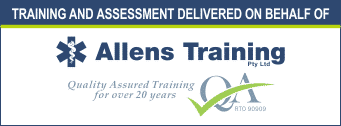Heart attack VS cardiac arrest: What’s the difference?
Heart attack VS cardiac arrest: What’s the difference?

30/09/2024
The following sections have been added: additional cardiac arrest causes and risk factors, first aid procedures for cardiac arrest along with relevant statistics about heart attack and cardiac arrest prevalence.
The terms heart attack and cardiac arrest are very often used as synonyms for each other, suggesting they mean the same thing in medical terms. In fact, nothing could be further from the truth. Despite being referred to interchangeably, they actually have very differing meanings.
If you’re confused about what makes them different, then don’t worry – you’re not alone! Read on for a closer look at what each term means and how they are differentiated in a medical setting.
What is a heart attack?
Heart attacks – or what doctors refer to as a myocardial infarction (or MI for short)- are caused by damage to the heart muscle. This can be restricted to a smaller part of the heart or more widespread, but the root cause is poor blood flow to the impacted area.
In this way, a heart attack has been referred as a “plumbing problem”.
When this happens, it is often caused by one defining factor: a blocked artery in the heart itself. These are what we call a type 1 heart attack, with blockages usually caused by cholesterol. When this area ruptures, it causes a clot which then leads to an obstruction of the artery and a heart attack.
What is cardiac arrest?
Cardiac arrest is not caused by a blockage, but rather is caused by damage to the electrical system that tells the heart when to beat.
Therefore, cardiac arrest could be understood as an “electrical fault’.
When a person has a cardiac arrest the following happens:
The heart stops beating and as a result there’s no blood circulating through the body to the patient’s vital organs, including their heart, brain and lungs.
This will cause the patient to stop breathing and ultimately become unresponsive.
This process can happen within a few seconds and requires quick CPR and Defibrillation.
Causes and Risk Factors of Cardiac Arrest
Cardiac arrest can happen for a variety of reasons and can even occur in seemingly healthy individuals. Its true, some heart attacks do cause a cardiac arrest and cause the heart to stop beating, but so many other things can also cause it.
Here’s a list of heart and non heart related causes, some might surprise you.:
Heart-Related Causes:
- Coronary artery disease: The narrowing or blockage of arteries reduces blood flow, potentially disrupting the heart’s electrical activity
- Heart attack (Myocardial infarction): Damage to the heart muscle can lead to life-threatening electrical disturbances.
- Cardiomyopathy: A thickened or enlarged heart muscle can cause irregular heart rhythms.
- Arrhythmias: Abnormal heart rhythms, such as ventricular fibrillation, can trigger cardiac arrest
Non-Heart-Related Causes:
- Trauma: Severe trauma, such as a car accident, can directly impact the heart’s rhythm.
- Drug Overdose: Stimulants (e.g., cocaine) can induce arrhythmias, leading to cardiac arrest
- Hypoxia (lack of oxygen): Drowning, suffocation, or respiratory failure deprives the heart of oxygen, affecting its function.
- Severe blood loss or dehydration: Causes hypovolemia, which impacts heart function.
Common Risk Factors Include:
- Genetics: Certain conditions can run in families, making cardiac arrest more likely. Some people have suffered sudden arrests even at a young age. Due to genetic reasons it may seem as if a Cardiac Arrest Has happened simply for No Reason
- Lifestyle factors: Smoking, obesity, lack of exercise, and high alcohol intake increase risk.
- Underlying conditions: High blood pressure, diabetes, and high cholesterol.
How much damage can a heart attack cause?
The size of the heart attack has some impact on how much damage it causes to the person affected, and therefore also the amount of treatment needed.
During medical assessments, doctors may check the blood levels of troponin (a protein) to check how big the heart attack has been. An echocardiogram (another term for a heart ultrasound) will also help to uncover damage.
Bigger heart attacks have the potential to significantly impact the strength of the heart, making it weaker.
Common symptoms of heart attack
Symptoms of a heart attack may be subtle to severe, and may include one or more of the following:
- Pain, pressure or squeezing in the chest area
- Pain and discomfort in the arm, neck or back
- Sudden shortness of breath
- Sudden vomiting or feelings of nausea
- Unexplained fatigue and dizziness
- To find out more about joining a remote first aid course with our nationally recognised trainers, contact us now or, browse our upcoming sessions here.
First aid treatment for a heart attack
If you think you or someone else is having a heart attack, act fast by getting emergency medical care. Here are the basic first aid steps for a suspected heart attack:
- Rest the person comfortably, seated or lying down.
- Call 000 for an ambulance (or your country’s emergency number)
- Assist them with any relevant prescribed medication.
- Stay with them and give constant reassurance until an ambulance arrives.
If the person collapses and becomes unconscious, follow the DRSABCD basic life support action steps. Completing a CPR course regularly is recommended to learn proper technique and keep skills current.
First Aid for Cardiac Arrests
When someone experiences cardiac arrest, immediate action is crucial to improve their chance of survival. Here’s some steps to consider.
- Ensure Safety: First, check the surroundings for any potential dangers to both yourself and the victim.
- Call Emergency Services: Dial 000 immediately to get professional help on the way.
- Check the Airway: Ensure the victim’s airway is clear by gently tilting their head back. If you notice blood or vomit, roll them onto their side to allow drainage.
- Begin Chest Compressions: Start chest compressions at a rate of 100-120 per minute. After every 30 compressions, provide two rescue breaths if you are trained in CPR.
- Use an AED: If an Automated External Defibrillator (AED) is available, apply it as soon as possible and follow the device’s instructions.
Knowing how to perform CPR can be the difference between life and death in an emergency situation. By taking a certified CPR course, you’ll gain the skills and confidence needed to act quickly and effectively.
Why is CPR and Defibrillation Important?
- CPR keeps blood circulating and oxygen reaching vital organs. High-quality CPR can double or triple survival rates(
- Defibrillation delivers an electric shock to help restore a normal heart rhythm. Using an AED within 3-5 minutes of collapse can increase survival chances by 50-70%.
Relevant Statistics
Heart Attack Statistics:
- Men are more likely to experience heart attacks, with more than twice as many cases compared to women.
- Heart attacks cause almost 1 in 25 deaths (about 4%), equating to one death approximately every 80 minutes.
Cardiac Arrest Statistics:
- Over 25,000 out-of-hospital cardiac arrests occur in Australia each year, with a mean survival rate of only 12%.
- Immediate CPR can double or even triple survival rates.
- The rate of cardiac arrests in general practice clinics is approximately 3.4%, with survival rates improving significantly when clinic staff use defibrillators
(Verywell Health).
Learn more at a first aid or CPR course
Every second counts during an emergency, and knowing how to respond can be the difference between life and death.
The HLTAID009 Provide Cardiopulmonary Resuscitation (CPR) course equips you with the skills and confidence to respond effectively to cardiac arrest and basic emergency first aid situations. Whether it’s a sudden collapse, choking, or any life-threatening cardiac event, this course ensures you’re ready to jump into action with the right techniques.
But why stop there? Expand your life-saving abilities with the HLTAID011 Provide First Aid course. This comprehensive training covers everything from CPR and cardiac emergencies to managing wounds, burns, fractures, allergic reactions, and much more.
You’ll gain the skills to protect your loved ones, colleagues, or even strangers in need. Imagine being the person everyone turns to during an emergency—calm, prepared, and capable of saving lives.
Don’t just think about it—take action now! Become the hero your community needs. Enroll in HLTAID009 Provide Cardiopulmonary Resuscitation today, and consider elevating your skills even further with the HLTAID011 Provide First Aid course. Your journey to becoming a confident, capable first aider starts here!






